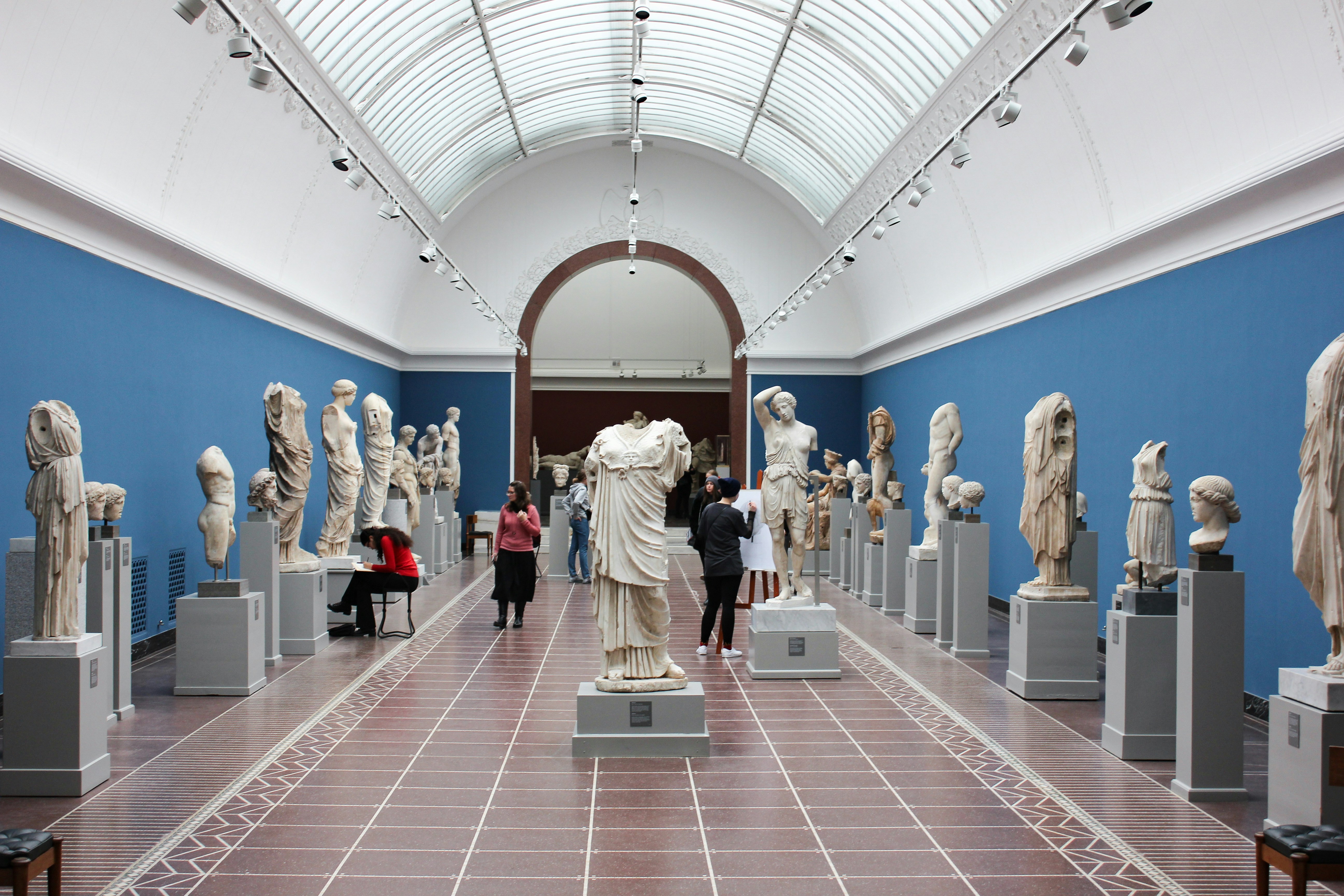The Museum Curator: A Fundamental Role
Objects also have a limited material lifespan. The good news is that with proper care, this lifespan can be extended. Based on this premise, it’s logical that institutions have someone responsible for safeguarding all material assets that represent an invaluable historical, cultural, and artistic heritage for everyone. This role is the museum curator.
- Definition of a museum curator
- What are a curator's responsibilities?
- Other roles of a museum curator
- Why Is the curator’s role important?
Definition of a museum curator
Among the many professionals that may make up a museum's team, the curator stands out as a key figure who is often confused with the restorer. According to the Royal Spanish Academy, a curator is: “the person in charge of the collections, documents, and interests.” Meanwhile, a restorer is defined as: “someone whose profession is to restore paintings, statues, porcelains, and other valuable or artistic objects.”
The two roles may overlap, but their work clearly differs in how they interact with museum pieces and objects. “The curator does not touch the artworks; the curator applies their knowledge and their eyes,” says Juan Luna Fernández, Head of the 18th Century Painting Conservation Department at the Prado Museum, in his documentary Voces del Prado. Conservation is preventive, while restoration is direct.
Some institutions also have the role of the restorer-conservator, which, according to the International Council of Museums, is "the qualified professional who has the education, training, knowledge, skills, experience, and understanding to act with the goal of preserving cultural heritage for the future…” This profession, as its name indicates, shares more with the curator, yet the curator never physically repairs the artwork—they care for all the environmental factors so the work is preserved in the best possible condition.
What are a curator's responsibilities?
A museum curator is not only concerned with the physical condition of an artwork but also its cultural and scientific development, dissemination, and the inventory, classification, and cataloging of works within a collection.
Even though, as stated, they are not restorers, curators do have tasks that directly affect the wellbeing of a piece, such as researching and deciding on climate control—temperature and humidity—for display, as well as the architectural needs of the location and its support. This, as one might expect, involves extensive prior research. Each piece must be studied: its material, the support it was made on, and any detail that could affect its conservation. It is a meticulous and highly responsible job.
A curator’s duties encompass a wide range of responsibilities, and they are increasingly involved in the wellbeing of both the institution and its collections. In fact, according to the Ministry of Culture, a museum curator today: “participates in the museological definition of the institution, in the museographic planning of exhibitions, designs research and outreach programs, and fundraising campaigns aimed at increasing public engagement. They position the institution on social media and work under principles of sustainability.”

Other roles of a museum curator
Curators may also be involved in other tasks such as fundraising for collections or administrative tasks like budgeting. The Ministry of Culture concludes that curators “form a highly respected professional group with a high level of education, capable of managing even the highest responsibilities within public administration; for this reason, they are often sought after for positions as cultural managers in other organizations and public institutions.”
Curators are also tasked with the dissemination of the art under their care, to reach as many interested people as possible, as well as documentation and communication duties. Quoting Jose Antonio Rodríguez in his text The Role of the Curator-Restorer in Museums: “Another important task [of the curator] is to document everything related to the objects, write and coordinate intervention projects, and, of course, communication.”
Why Is the curator’s role important?
A curator carries enormous responsibility. Curators must be extremely meticulous individuals with a deep passion for culture. They are responsible for safeguarding humanity’s heritage so that future generations can also enjoy it. This person is entrusted with the care of unique and invaluable objects.
Quoting again Jose Antonio Rodríguez, who reinforces this idea: “the specialist must be aware of the great responsibility their work entails, as the durability of unique, original objects of high historical or cultural value—sometimes irreplaceable—depends on them.”
Although it is a relatively little-known profession, these professionals have the great mission of allowing humanity to continue enjoying the heritage offered by museums.
BIBLIOGRAPHY
El trabajo del conservador | Le site officiel du musée d'Aquitaine [online], (n.d.). Le site officiel du musée d'Aquitaine. [Accessed August 12, 2024]. Available at: https://www.musee-aquitaine-bordeaux.fr/es/articulo/el-trabajo-del-conservador
The functions of museum curators today [online], (n.d.). Ministry of Culture Website | Ministry of Culture. [Accessed August 12, 2024]. Available at: https://www.cultura.gob.es/cultura/mc/bellasartes/conocemas/exposicion-virtual-presentacion/exposicion-virtual-secciones/profesionales-patrimonio/7funciones-conservadores.html
Conservation and restoration, a silent profession that embraces artworks inside the museum [online], (n.d.). Museo de Arte Moderno de Medellín. [Accessed August 12, 2024]. Available at: https://www.elmamm.org/noticia/un-oficio-silencioso-que-abraza-las-obras-de-arte-al-interior-del-museo/
Wikimedia project contributors, (2018). Museum Curator - Wikipedia, the free encyclopedia [online]. Wikipedia, the free encyclopedia. [Accessed August 12, 2024]. Available at: https://es.wikipedia.org/wiki/Conservador_de_museo#:~:text=Un%20conservador%20cumple%20con%20la,(coadyuvar%20al%20conocimiento%20compartido).
"Curator" is not the same as "restorer" [online], (n.d.). FundéuRAE | Foundation of Urgent Spanish. [Accessed August 12, 2024]. Available at: https://www.fundeu.es/recomendacion/conservadorrestaurador/#:~:text=Conservador%20es%20la%20'persona%20que,acuerdo%20con%20el%20diccionario%20académico.
Voces del Prado – Museo Nacional del Prado [online], (n.d.). Museo Nacional del Prado. [Accessed August 12, 2024]. Available at: https://www.museodelprado.es/voces-del-prado
Rodríguez Martín, J. A., (n.d.). THE ROLE OF THE CURATOR-RESTORER IN MUSEUMS. The Restoration of Heritage in the 21st Century, 11.